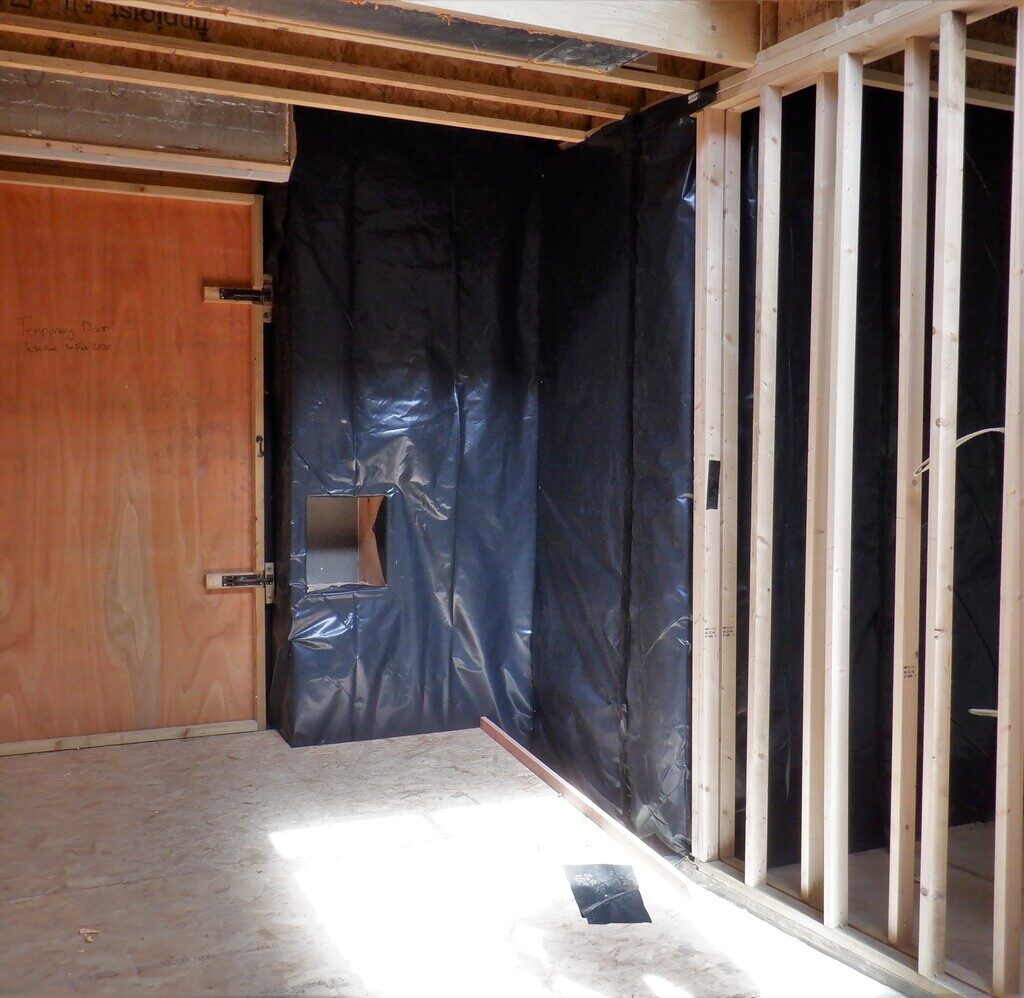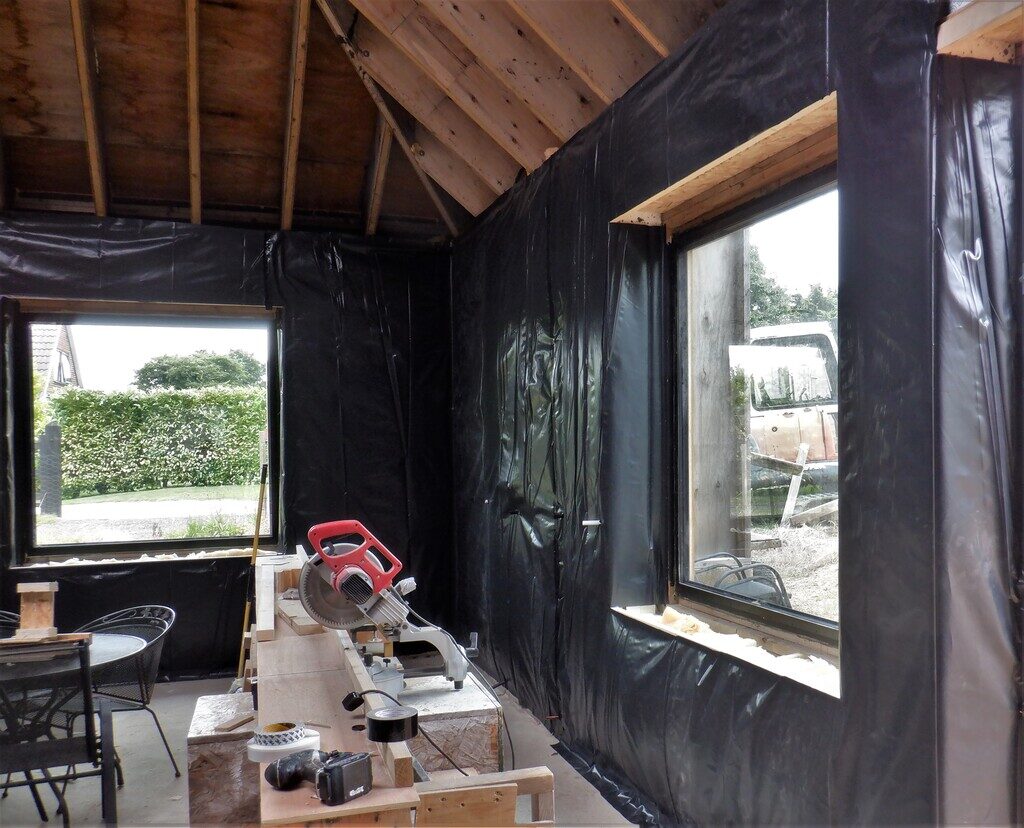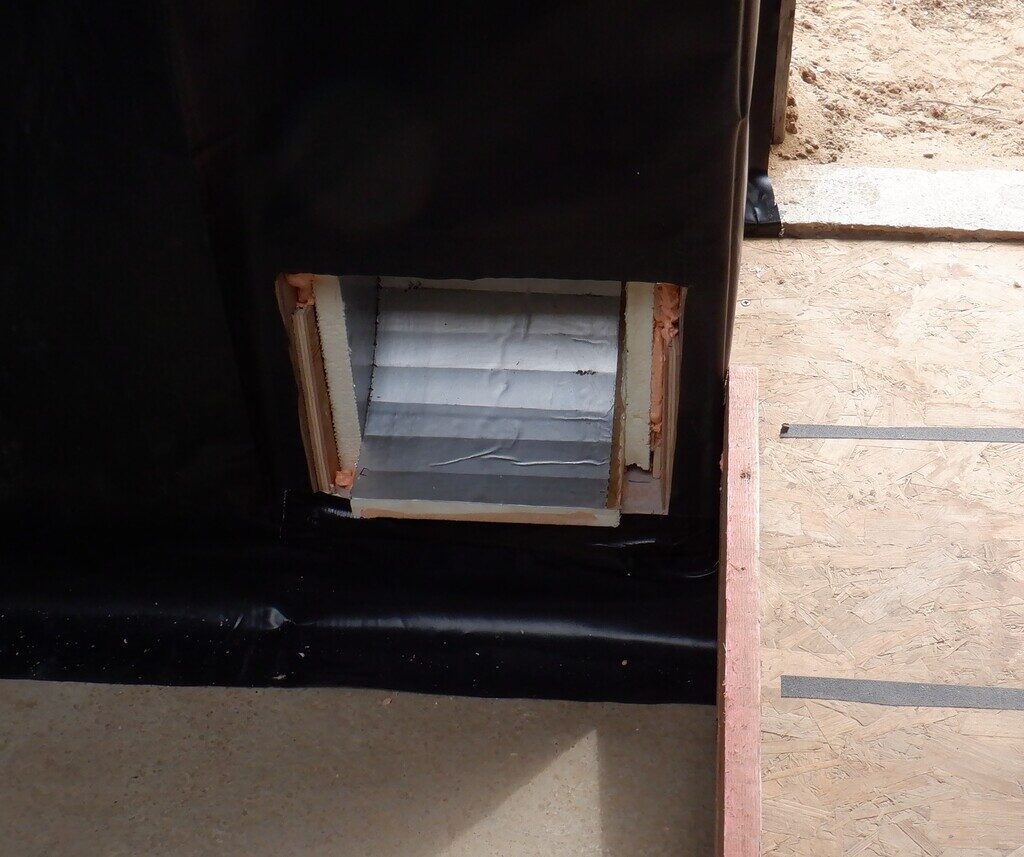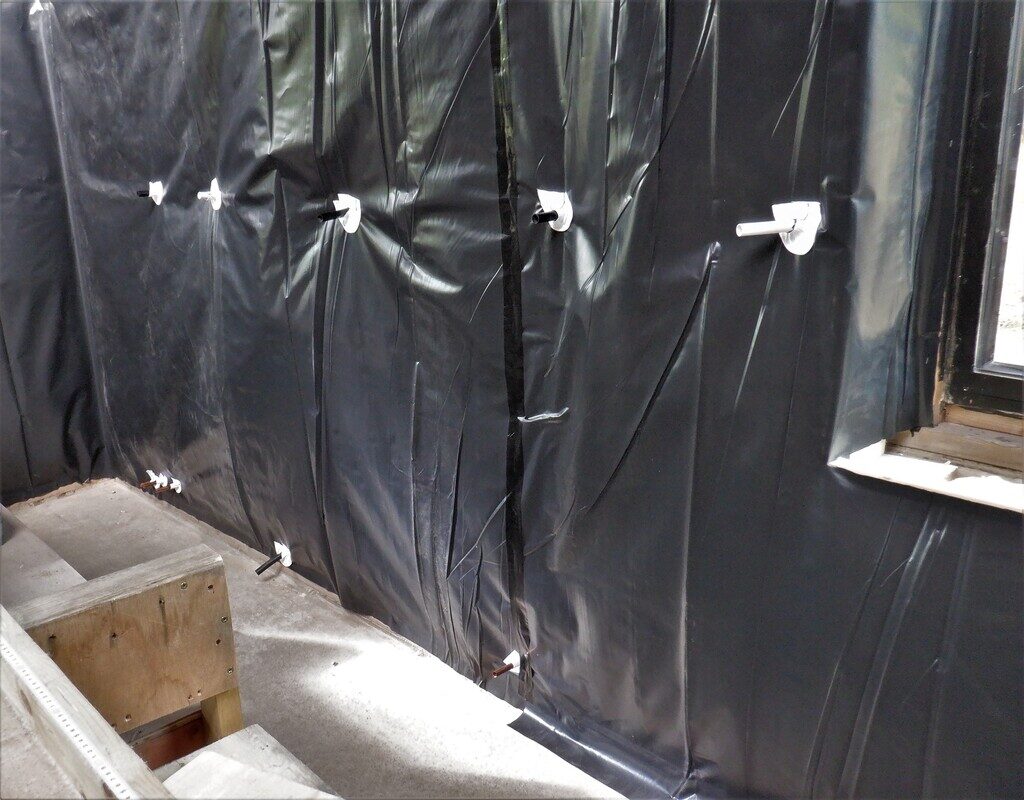To finish off filling in the outer walls, and to provide a vapour barrier too stop moisture getting into our timber elements, we proceeded to cover up the glass wool with a layer of a plastic membrane, from top to bottom. We used the thick heavy duty DPM polyethene material, comes in rolls of 4metres wide by 25metres long. We started at the Front door again (like for the glass wool) and cut strips off the roll, either 2.75metres or 3metres lengths, depending on whether we had a wall going right up to the floorboards of the first floor or to the underside of the joists of the first floor. The Great Room has another length of 3.2metres to reach the roof rafters as there are no first floor structure hanging over the Great Room.
To ensure a tight seal to the timber framework, we decided to use a line of thick high quality double sided glue, namely butyl .. .. .. that comes in rolls of 25mm width. We stuck it onto the freshly sanded wooden surfaces of the bottom footplate and along on the top-plate timber that support the first floor. Where there was plastic already up there on those sections of the wall supporting the joists of the first floor, we used another sticky tape, this time an acrylic based glue that is much thinner (and cheaper) but still very sticky to join the two layers of the plastic together.
So over the week, we proceeded to shape, cut, glue and staple the plastic membrane up going around the house to cover up the glass wool. Windows we went straight across and then cut out the middle and used the side flaps to wrap towards the oak frame of the window but we stopped and started again at the doorways.
We had to pause in the middle of this, while the Conservatory Air Duct was Built Inside Wall was installed but it was fairly easy in covering the wall.
The only complicated bits were the corners and places where an internal wall meets at right angles the outer wall. They needed the plastic to go around the obstacles but also seal onto the membrane coming along the walls. That took a while to do each one in turn.
The final task left to do was to seal all the conduits that had to pierced through the plastic membrane so we used a very conformable 60mm wide butyl glue tape to wrap around the conduit and stretch flat onto the plastic.
This concludes Part 1 of this job, Part 2 and perhaps Part 3 will be done when we have managed to get access to the sandy soil outside the window of Bedroom 1 to install more underground conduits and junction boxes, used up a lot of the CLS timber in the Great Room, move the tools and supplies in the Utility Room and finally all the roof rafters upstairs needs filling up with insulation foam board, glass wool and more of this vapour barrier membrane.




